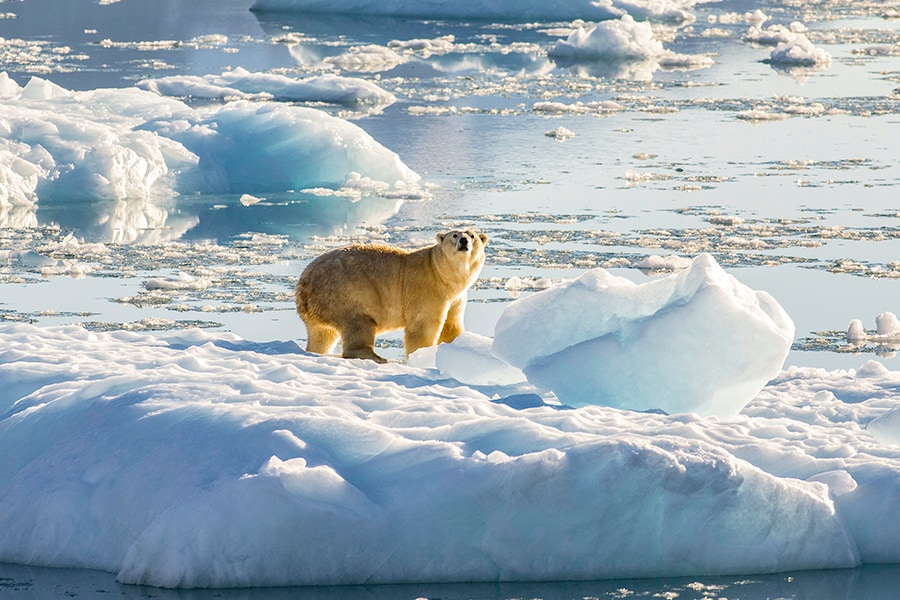
These polar bears can survive with less sea ice
The discovery suggests a way that a small number of bears might survive as warming continues and more of the sea ice that they normally depend on disappears; however, grave risk to overall polar bear populations remain
 A photo provided by Thomas W. Johansen/NASA shows a polar bear atop a chunk of floating glacial ice in a fjord in Southeastern Greenland in 2016. The overall threat to the animals from climate change remains, but a new finding suggests that small numbers might survive for longer as the Arctic warms. (Thomas W. Johansen/NASA via The New York Times)
A photo provided by Thomas W. Johansen/NASA shows a polar bear atop a chunk of floating glacial ice in a fjord in Southeastern Greenland in 2016. The overall threat to the animals from climate change remains, but a new finding suggests that small numbers might survive for longer as the Arctic warms. (Thomas W. Johansen/NASA via The New York Times)
Scientists have identified a distinct subpopulation of polar bears in southeastern Greenland that, in an area with little sea ice, survive by hunting from ice that breaks off glaciers.
The discovery suggests a way that a small number of bears might survive as warming continues and more of the sea ice that they normally depend on disappears. But the researchers and other polar experts cautioned that grave risks to the overall polar bear population in the Arctic remain and will only be lessened by cutting greenhouse gas emissions to curb global warming.
The subpopulation, believed to number several hundred animals, was identified during a multiyear study of what was thought to be a single population of bears along Greenland’s entire 1,800-mile-long east coast. Through analysis of satellite-tracked movements, tissue samples and other data, the bears in the southeast were found to be isolated, both physically and genetically, from the others.
“This was a wholly unexpected finding,” said Kristin Laidre, a biologist at the University of Washington who has studied marine mammal ecology in Greenland for two decades. Laidre is the lead author of a paper on the subpopulation published Thursday in the journal Science.
Southeastern Greenland is especially remote, with narrow fjords hemmed in by steep mountains. At the inland end there are often glaciers that terminate in the water; at the other end is open ocean, with a strong south-flowing current. “These bears are very geographically isolated,” Laidre said. “They’ve really kind of evolved to being residents because that’s the only way to live down there.” The researchers estimated that this subpopulation had been isolated for at least several hundred years.
©2019 New York Times News Service







